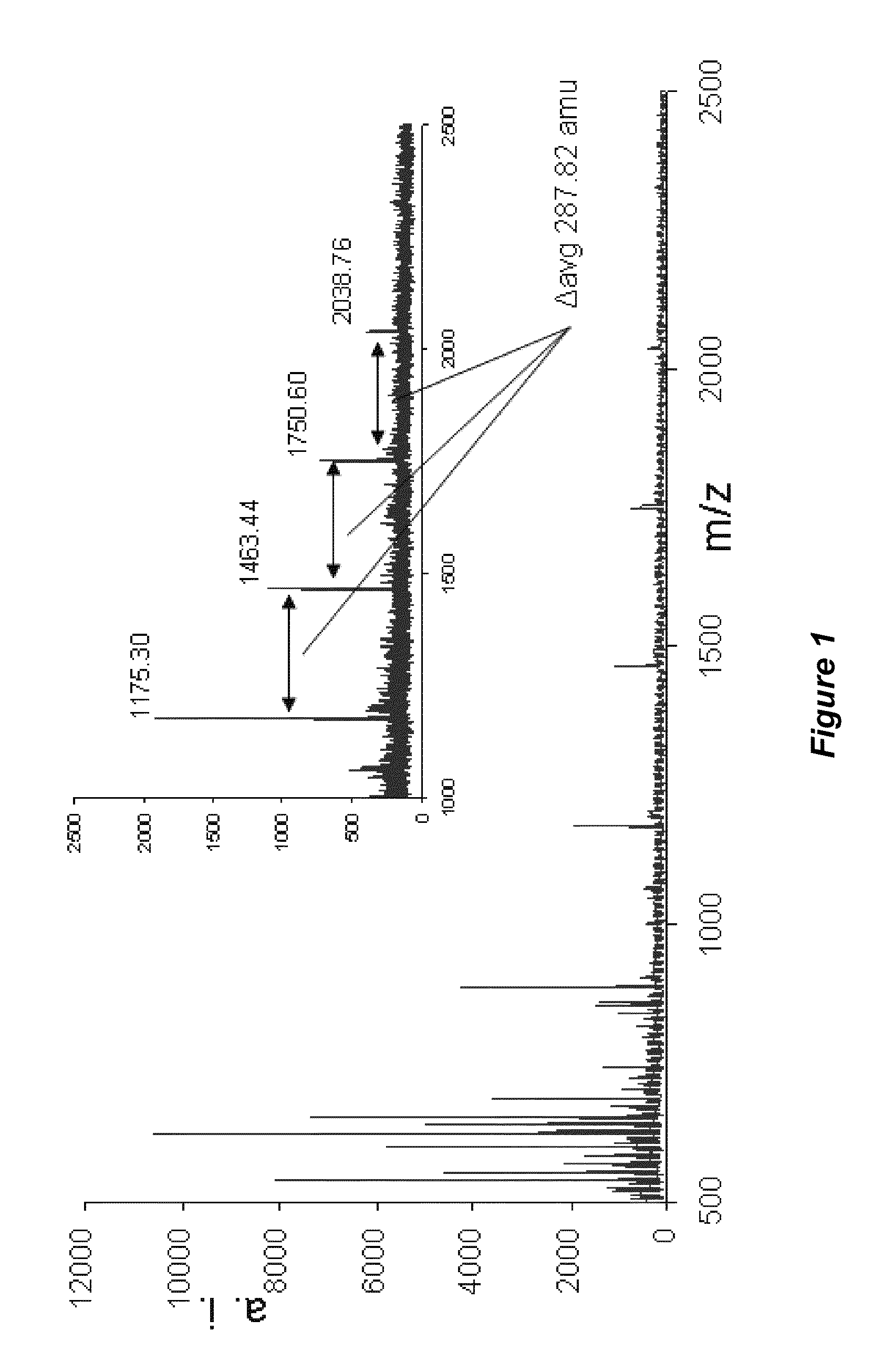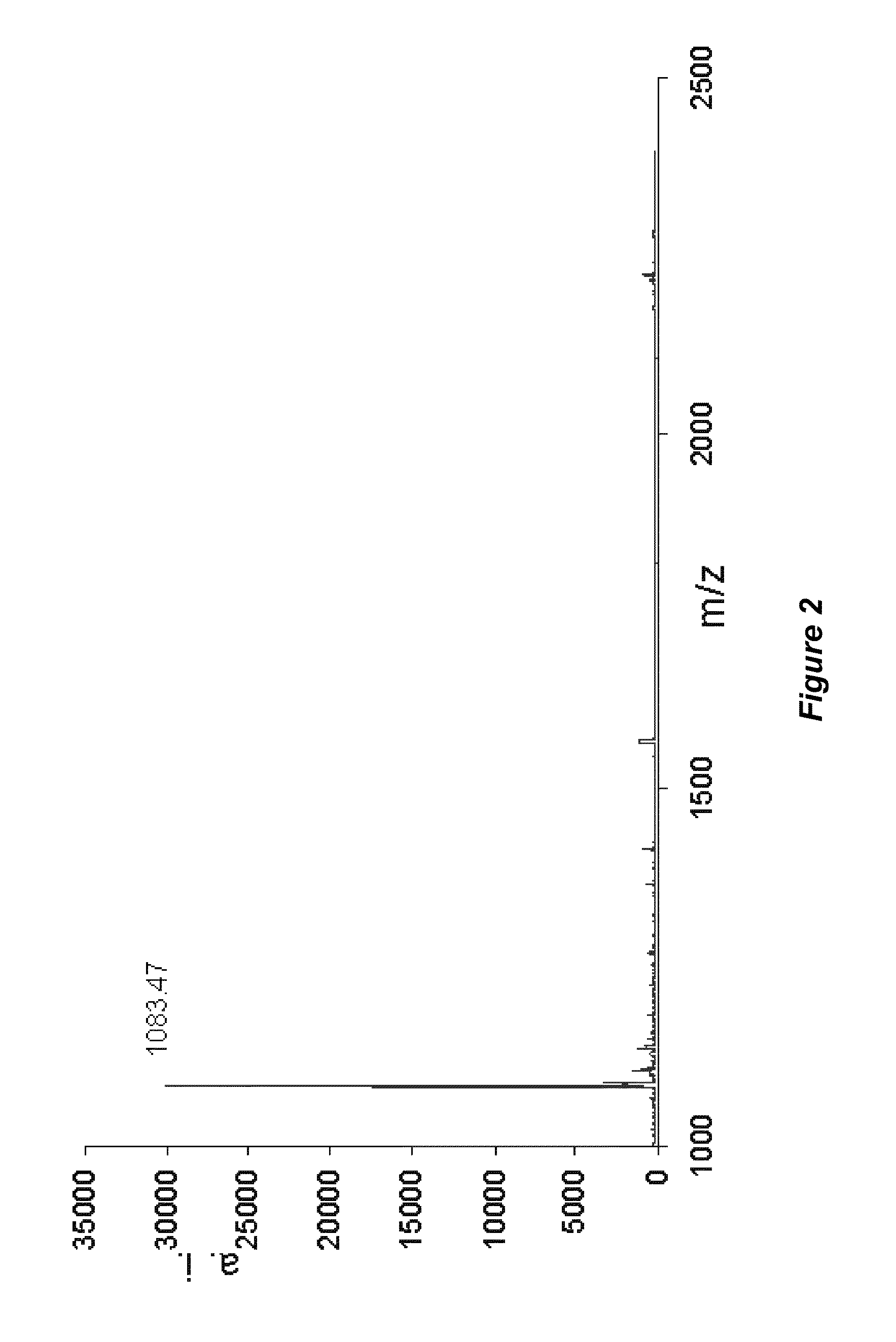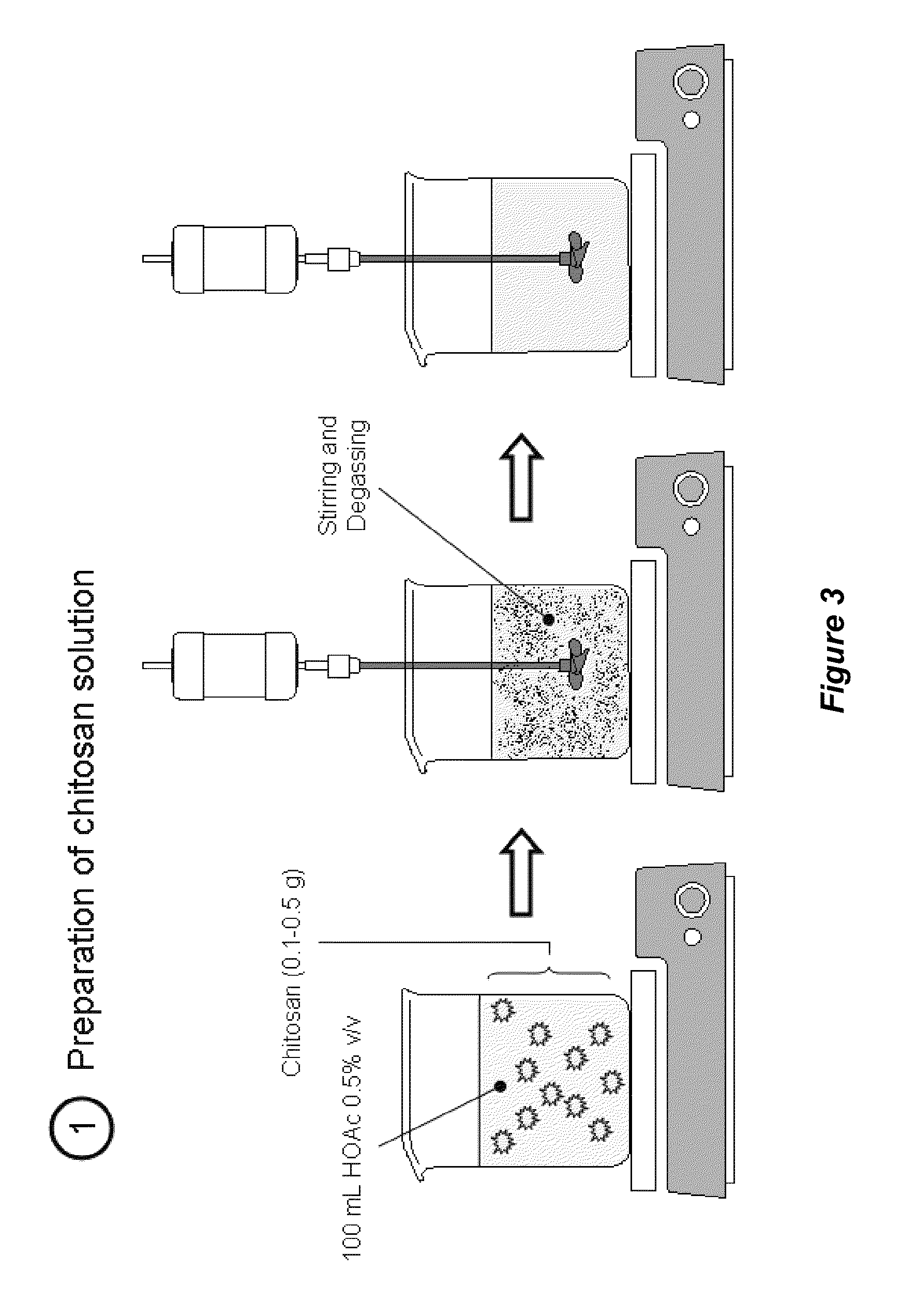Tannin-chitosan composites
a technology of chitosan and composites, applied in the field of chitosan composites, can solve the problems of insufficient biocompatibility, limited stability, biodegradability and tensile strength, and numerous drawbacks of chitosan formulations and materials, and achieve the effect of improving mechanical properties and increasing the effectiveness of composites
- Summary
- Abstract
- Description
- Claims
- Application Information
AI Technical Summary
Benefits of technology
Problems solved by technology
Method used
Image
Examples
example 1
Tannin-Chitosan Composites: Preparation, Data, and Applications
[0122]Pharmaceutical grade chitosan (deacetylation degree of 92% calculated by 1H NMR; mean molecular weight of 185 kDa calculated by specific viscosimetry) derived from shrimp shells was provided by the Polymers Research Laboratory (POLIUNA) of Costa Rica. The degree of deacetylation and mean molecular weight distribution can be controlled in the production of tannin-chitosan composites to provide chitosan with higher or lower degrees of deacetylation, and / or higher or lower mean molecular weights. Chitosan-tannin composites that included hydrolyzable tannins (HT) and proanthocyanidins (PA) were separately prepared and analyzed.
[0123]Proanthocyanidins (PA).
[0124]Polyphenolics were isolated by liquid chromatography and subjected to MALDI-TOF MS using trans-3-indoleacrylic acid as the matrix. Spectral analysis provided the degree of polymerization, monomeric substitution, and the nature of intermolecular bonds (Reed et al...
example 2
Tannin-Chitosan Composites: Secondary Liposomes Stabilized by Electrostatic Deposition of Tannin-Chitosan Composites
[0189]Liposomes are spherical bilayer vesicles formed by dispersions of certain polar lipids in aqueous solvents. Liposomes have attracted attention in the food and agricultural industries because of their ability to act as targeted release-on-demand carrier systems for both water- and oil-soluble functional compounds, such as antimicrobials, flavors, antioxidants, and bioactive ingredients (Benech et al. 2002; Were et al. 2003). Encapsulation of functional components in liposomes has been shown to increase their stability and maintain their activity in environments that typically lead to rapid degradation.
[0190]One major limitations of liposomes is that they have a tendency to leak and lose encapsulated components over time (Taylor et al. 2005). Gradual coalescence of liposomes may also occur. Coalescence becomes more pronounced in low pH environments where surface ch...
example 3
In Vitro Uptake Study of Protein-Loaded Chitosan-Tannin Nanoparticles as Adjuvants for Oral Vaccination
[0215]Novel vaccine adjuvants and particle-based delivery vehicles are being evaluated in a variety of vaccines, including those against diseases such as cancer, malaria, AIDS, and hepatitis, among others [1], in which a cellular and / or mucosal immune response is desired. The development of safe, novel adjuvants is necessary to maximize the efficacy of new and / or available vaccines. According to Gupta and Siber, an “ideal” adjuvant would elicit a persistent, high quality immune response to an antigen while being non-toxic, biodegradable, non-immunogenic, and chemically defined for reproducible manufacture [2].
[0216]Chitosan.
[0217]Chitosan is an abundant, natural linear polysaccharide derived by the deacetylation of chitin from crustaceans, insects, and fungi [16, 17]. Chitosan is non-toxic (LD50>16 g / kg [18]), biodegradable [19], non-immunogenic [16], and can be manufactured reprod...
PUM
| Property | Measurement | Unit |
|---|---|---|
| tensile strength | aaaaa | aaaaa |
| tensile strength | aaaaa | aaaaa |
| mean molecular weight | aaaaa | aaaaa |
Abstract
Description
Claims
Application Information
 Login to View More
Login to View More - R&D
- Intellectual Property
- Life Sciences
- Materials
- Tech Scout
- Unparalleled Data Quality
- Higher Quality Content
- 60% Fewer Hallucinations
Browse by: Latest US Patents, China's latest patents, Technical Efficacy Thesaurus, Application Domain, Technology Topic, Popular Technical Reports.
© 2025 PatSnap. All rights reserved.Legal|Privacy policy|Modern Slavery Act Transparency Statement|Sitemap|About US| Contact US: help@patsnap.com



